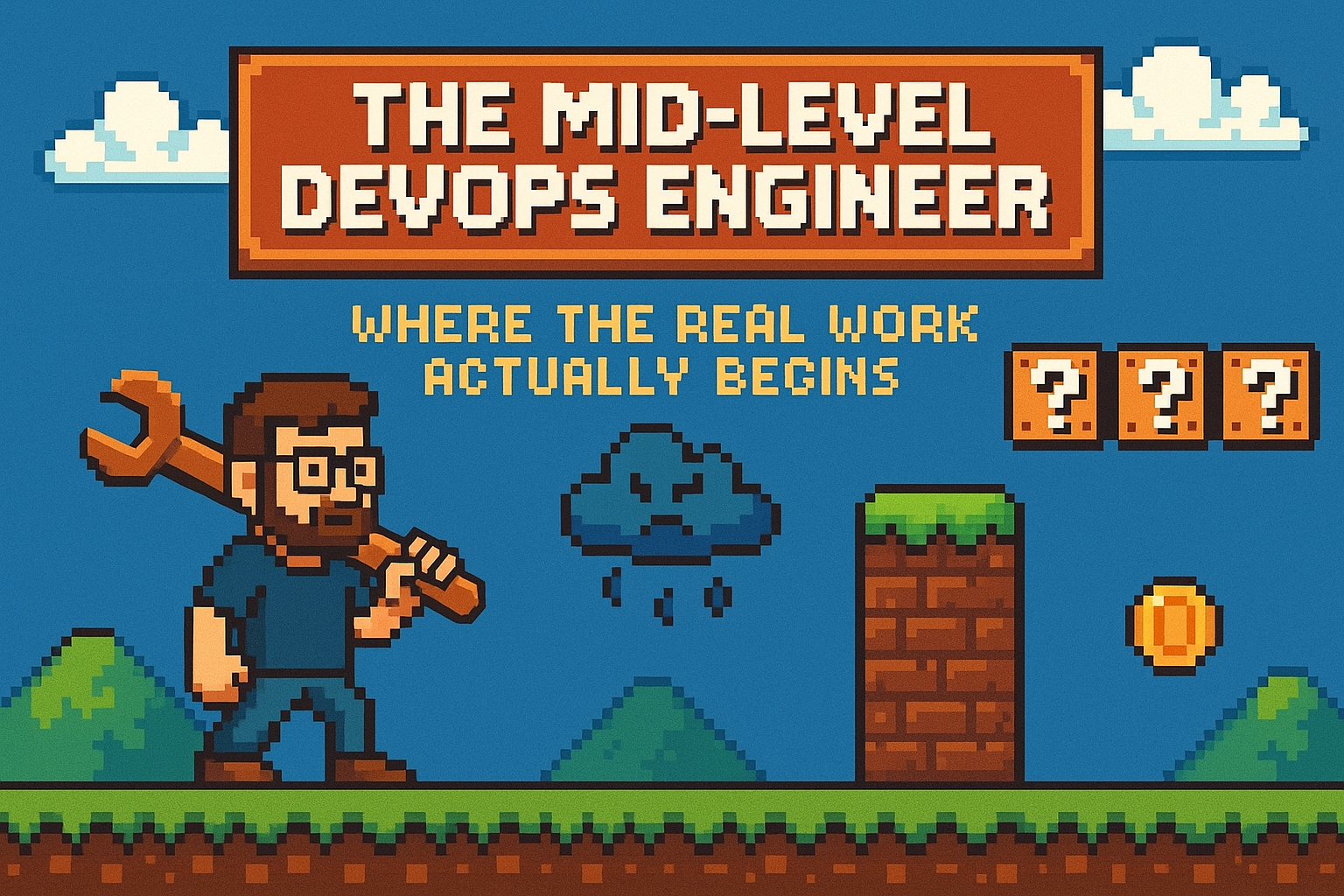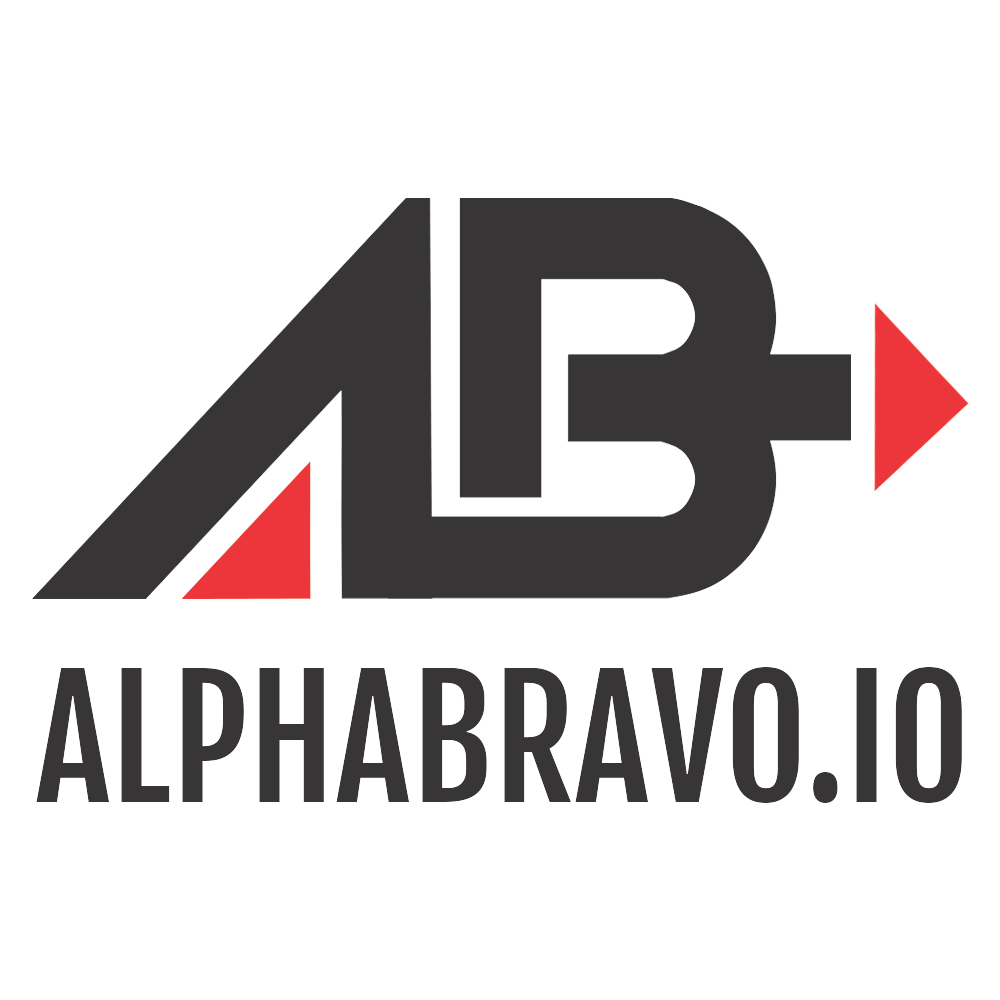The Mid-Level DevSecOps Engineer: Where the Real Work Actually Begins

So you've survived your first year or two as a junior DevOps engineer. Congratulations. You can write basic Terraform, deploy containers without breaking production (most of the time), and you've probably automated a few scripts that make your team's life easier. But here's the thing nobody tells you about making the jump to mid-level: it's not just about knowing more tools.
The difference between a beginner and mid-level DevOps engineer isn't just experience or salary ranges (though mid-level engineers typically earn $130-170k compared to entry-level at $93-100k). It's fundamentally about responsibility, decision-making, and the complexity of problems you're expected to solve on your own.
The Mental Shift: From Following to Leading
A junior DevOps engineer follows playbooks. They execute predefined tasks, implement existing solutions, and ask for help when things go wrong. That's perfectly fine. That's how you learn.
But a mid-level engineer? You're expected to write the playbooks. You're the one junior engineers come to when their deployment fails at 2 AM. You're designing solutions, not just implementing them. The shift from "how do I do this?" to "what should we do here?" is massive.
This isn't just about technical skills. It's about developing what I call "systems thinking." You start seeing how all the pieces fit together instead of just focusing on your small part. When a junior engineer deploys a microservice, they're thinking about that one service. When a mid-level engineer deploys it, they're thinking about load balancing, service mesh implications, monitoring requirements, security boundaries, and how it affects the entire ecosystem.
The typical mid-level DevOps engineer has 2-4 years of experience, but more importantly, they've seen enough failures to develop good instincts. They've been woken up by PagerDuty enough times to understand why monitoring matters. They've had deployments go sideways enough times to appreciate the value of proper testing and rollback strategies.
Infrastructure as Code: Beyond the Basics
Let's talk about Terraform and Infrastructure as Code. A junior engineer can write basic Terraform configurations. They can create an EC2 instance, set up an S3 bucket, maybe even configure a simple VPC if they follow a tutorial carefully.
A mid-level engineer builds Terraform modules. They understand the difference between writing Terraform code and architecting Terraform solutions. They're thinking about module composition, state management across teams, and how to structure code for reusability without creating maintenance nightmares.
Module versioning becomes critical at this level. You're not just writing infrastructure code for yourself anymore. Other teams depend on your modules. Breaking changes in your VPC module can affect dozens of other projects. You need to understand semantic versioning, backward compatibility, and how to deprecate old functionality gracefully.
Remote state backends and state locking. A junior might use local state files or a simple S3 backend. A mid-level engineer understands why state locking matters, how to structure state files for team collaboration, and the security implications of state file access. They're implementing proper state isolation between environments and projects.
Policy as Code integration. Tools like Open Policy Agent (OPA) and Sentinel become part of your toolkit. You're not just provisioning infrastructure; you're enforcing organizational policies through code. Security teams want to ensure no S3 buckets are accidentally public. Compliance teams need to verify encryption standards. Finance teams want cost controls. You're the one implementing these requirements as automated policies.
Here's where it gets interesting: advanced Terraform techniques like for_each loops, dynamic blocks, and custom providers. You're not just creating resources; you're creating infrastructure patterns that scale across the organization. Your Terraform code starts looking more like software development than configuration management.
Configuration as Code: The Complexity Layer
Configuration management at the mid-level isn't just about running Ansible playbooks or Chef cookbooks. It's about understanding the difference between declarative and imperative approaches, and knowing when to use each.
Ansible at scale requires different thinking. You're not configuring individual servers anymore; you're managing fleets of hundreds or thousands of instances. Inventory management becomes complex. You need to understand dynamic inventories, custom modules, and how to structure playbooks for maintainability across multiple teams.
Idempotency becomes crucial. Your configurations need to work whether they're run once or a hundred times. You're thinking about convergence, drift detection, and how to handle configuration changes without service disruption. The difference between a junior and mid-level engineer is understanding why idempotency matters and how to achieve it in complex scenarios.
Integration with CI/CD pipelines. Your configuration management isn't just ad-hoc automation anymore. It's integrated into deployment pipelines, triggered by infrastructure changes, and coordinated with application deployments. You're thinking about the entire software delivery lifecycle, not just configuration management in isolation.
GitLab CI/CD: Complex Workflows and Advanced Patterns
A junior DevOps engineer can set up basic GitLab pipelines. Build, test, deploy. Maybe they've figured out how to use variables and artifacts. That's table stakes for mid-level work.
Dynamic pipeline generation is where things get interesting. You're creating pipelines that adapt based on code changes, branch names, or external triggers. The pipeline structure itself becomes code that generates other code. This isn't just YAML configuration anymore; it's pipeline programming.
Multi-project pipelines and complex dependencies. Your applications aren't isolated anymore. Service A depends on Service B, which depends on a shared library, which has its own testing requirements. You're orchestrating deployments across multiple repositories, managing artifact dependencies, and coordinating releases between teams.
Security integration at the pipeline level. SAST, DAST, container scanning, and compliance checks aren't afterthoughts. They're integrated into every stage of your pipeline. You're setting up security gates that prevent vulnerable code from reaching production while balancing security requirements with development velocity.
Environment-specific deployment strategies. Blue-green deployments, canary releases, and feature flags become standard tools. You're not just deploying code; you're managing risk through sophisticated deployment patterns. Each environment (dev, staging, production) has different requirements, and your pipelines reflect that complexity.
The artifact management alone becomes complex. You're not just passing files between jobs; you're managing container images, infrastructure state files, test reports, and security scan results. Each artifact has lifecycle requirements, security considerations, and storage optimization needs.
Kubernetes: From Container Orchestration to Platform Engineering
Running containers in Kubernetes is junior-level work. Managing Kubernetes as a platform is mid-level responsibility.
RBAC and security boundaries. You're not just creating deployments and services. You're designing security models for multi-tenant clusters. Different teams need different levels of access. Service accounts need specific permissions. Network policies need to enforce microsegmentation. The complexity multiplies when you're managing multiple clusters across different environments.
Custom Resource Definitions (CRDs) and operators. You're extending Kubernetes functionality through custom resources. Maybe you're building operators to manage application-specific concerns. Perhaps you're integrating with external systems through custom controllers. This isn't just using Kubernetes; it's extending Kubernetes.
Multi-cluster management and federation. One cluster was easy. Ten clusters across different regions and cloud providers? That's where mid-level skills matter. You're thinking about cluster lifecycle management, cross-cluster networking, and how to maintain consistency across heterogeneous environments.
Resource management and optimization. Requests, limits, horizontal pod autoscaling, vertical pod autoscaling, cluster autoscaling. You understand the interplay between all these systems and how to optimize for both performance and cost. You're monitoring resource utilization patterns and making informed decisions about cluster sizing.
Storage and persistence. StatefulSets, persistent volumes, storage classes, and data lifecycle management. You understand the complexities of running stateful workloads in Kubernetes and the trade-offs between different storage solutions.
Monitoring and Observability: Beyond Basic Metrics
A junior engineer sets up basic monitoring. CPU, memory, disk space. Maybe they configure some application metrics and create a few dashboards.
A mid-level engineer designs observability strategies. They understand the difference between monitoring and observability. They're implementing distributed tracing, structured logging, and metrics that actually matter for business outcomes, not just system health.
Complex alerting strategies. You're not just setting up alerts; you're designing alert hierarchies that reduce noise while ensuring critical issues get attention. Alert fatigue is real, and you're responsible for preventing it while maintaining system reliability.
Multi-cloud monitoring complexity. Your applications run across AWS, Azure, and GCP. Each cloud provider has its own monitoring tools, but you need unified visibility. You're integrating multiple monitoring systems, correlating data across different platforms, and providing a single pane of glass for operations teams.
Cost monitoring and optimization. Cloud bills are your responsibility now. You're not just monitoring technical metrics; you're tracking spend, identifying optimization opportunities, and implementing cost controls. This requires understanding the relationship between technical decisions and financial impact.
The Leadership Component
Here's what really separates junior from mid-level: you're expected to mentor others. Junior engineers look to you for guidance. You're reviewing their code, helping them debug issues, and sharing knowledge across the team.
Technical decision making becomes your responsibility. When should we use Kubernetes vs. serverless? Which monitoring solution fits our needs? How do we structure our Terraform for this new project? These aren't questions you escalate anymore; they're questions you answer.
Incident response and troubleshooting at a higher level. You're not just following runbooks; you're writing them. When production breaks in ways you've never seen before, you're the one figuring out what went wrong and how to prevent it from happening again.
Cross-team collaboration increases significantly. You're working with security teams on compliance requirements, with development teams on deployment strategies, and with business stakeholders on operational requirements. Communication skills become as important as technical skills.
The Automation Mindset Evolution
Junior engineers automate repetitive tasks. Mid-level engineers automate decision-making processes.
Advanced scripting and automation. Your scripts aren't just doing simple tasks anymore. They're making complex decisions based on system state, external APIs, and business logic. You're building systems that can respond to incidents, scale infrastructure based on demand, and maintain themselves with minimal human intervention.
Integration between multiple systems. Your automation spans across different tools, cloud providers, and organizational boundaries. You're building workflows that coordinate between GitLab, Kubernetes, monitoring systems, and external services. The complexity of these integrations requires sophisticated error handling, retry logic, and rollback capabilities.
The Reality Check: What It Actually Takes
The jump from junior to mid-level isn't automatic. It typically takes 2-4 years of hands-on experience, but more importantly, it requires a fundamental shift in how you approach problems.
You need to start taking ownership of outcomes, not just tasks. When a deployment fails, you don't just fix the immediate issue; you analyze the root cause and implement preventive measures. When a junior engineer asks for help, you don't just give them the answer; you help them understand the problem-solving process.
The learning never stops. Technology changes rapidly in this field. New tools emerge constantly. Cloud providers release new services every month. Your job isn't just knowing current tools; it's developing the ability to quickly evaluate and adopt new technologies when they provide value.
Building systems thinking. Everything is connected. A change in one part of the system affects other parts. Mid-level engineers develop an intuitive understanding of these relationships and can predict the downstream effects of their decisions.
The Path Forward
Making the transition to mid-level isn't just about accumulating skills. It's about developing judgment. When should you use managed services vs. self-hosted solutions? How do you balance security requirements with development velocity? What's the right level of automation for your organization's current maturity?
The market recognizes this difference. Companies are willing to pay significantly more for mid-level engineers because they provide value beyond just executing tasks. They solve problems, reduce risk, and enable other team members to be more effective.
But here's the thing that might surprise you: becoming a mid-level DevOps engineer isn't the end goal. It's where the real learning begins. You've built the foundation; now you can start tackling the truly complex challenges that make this field both frustrating and incredibly rewarding.
The best mid-level engineers aren't the ones who know every tool. They're the ones who understand how all the pieces fit together to create reliable, scalable, and maintainable systems. That's what makes the jump from junior to mid-level so significant, and why organizations value these skills so highly.
Stop waiting for someone to tell you you're ready. Start building systems, taking ownership of outcomes, and helping others learn. The gap between junior and mid-level isn't just about what you know; it's about what you do with that knowledge.

